Injection Molded Structural Electronics and Designing in a 3D Space

Sini Rytky, VP of Product Management at TactoTek, and Tuomas Heikkilä, Senior Electronics, join Judy Warner on the OnTrack Podcast to talk about Injection Molded Structural Electronics, or IMSE, the integration of electronics inside 3-dimensional electronics to create smart surfaces. TactoTek is a leading provider of solutions for 3D structural electronics, enabling the integration of printed circuitry and discrete electronic components into injection molded plastics. Listen to how TactoTek and Altium are combining forces to research and develop design rules for this entirely new technology.
Listen to the Podcast
Download this episode (right-click and save)
Watch the Video
Show Highlights
- Guests today: Sini Rytky, VP of Product Management at TactoTek, and Mr. Tuomas Heikkilä, Sr Electronics - Injection Molded Structural Electronics (IMSE) technology, background in the mobile phone industry
- Injection Molded Structural Electronics or IMSE means integrating electronics inside 3-dimensional electronics to create smart surfaces.
- Examples include capacitive touch functions, illuminated icons, wireless connectivity such as Bluetooth, and near-field communication.
- IMSE solves many traditional problems, but it also creates additional use cases to create electronics
- Film, components, injection mold into one single piece
- Benefits: Save up to 90% of the assembly depth and 80% of part weight - creates a beautiful and seamless intuitive user interface
- Application: Human-machine interface with automotive manufacturers; wearables and electronics in textiles; also allows customers to vertically integrate and extend their offering
- Designing smart structures - how is design different for PCB designers?
- Materials research and chemistry research are the foundation for understanding Material Stacks like these.
- Key element is the height of the component. It needs to fit in the product and withstand the injection molding.
- It uses standard PCB processes and then injection molds afterward.
- Starting to develop new design rules for a new technology. This will help designers ramp up and use the technology. PCB layer stackup is currently being used, if the IMSE stackup can be defined it will make the process faster.
- Currently, checking dielectric manually is very time-consuming, i.e., allowing the users to add constraints.
- TactoTek is at the center of convergence - blurring the lines between disciplines.
Links and Resources
- TacoTek Website
- TactoTek Overview Video
- Tactotek in the News
- Tactotek® Injection Molded Structural Electronics (IMSE™) Solution Is Automotive Certified
- TactoTek Unveils 3D Manufacturing Process
- AltiumLive 2018: Annual PCB Design Summit
- Watch TactoTek presentation at AltiumLive 2018
Transcript
Hey everyone this is Judy with Altium's OnTrack podcast. Thanks for joining again. I have two amazing guests hailing all the way from Finland today and I look forward to sharing them with you. Before then I ask you to please connect with me on LinkedIn, on Twitter, and Altium is on all the traditional social media channels Facebook, LinkedIn, and Twitter.
So today, we have a look into the future of technology with TactoTek, and I have two wonderful guests, Sini Rytky and Tuomas Heikkilä. So we've been working here at Altium closely with Sini, Tuomas, and their whole team there, and we are excited to show you, kind of this cutting-edge technology and the amazing things that they're doing in Finland to advance a whole litany of advanced electronics manufacturing and technology and while we continue to work feverishly on AD19 and getting in the traditional functions that you would like, I wanted to give you a sneak peek on something more for the future. This is not going to be in AD19, but we continue to work together, sort of on a research kind of function, with these two and all of TactoTek. So I'm excited for you to learn more about them - so let's get started. Sini, Tuomas, welcome.
Thank you, Judy, for having us here.
So Sini, I think I'm going to start with you. Can you tell us a little? Well, before we get going, why don't you both introduce yourselves and tell us your background in the industry and what your role entails at TactoTek exactly?
Sure, so my name is Sini Rytky, and I'm heading Product Management at TactoTek. In practice, it means that my team is responsible for technology productization and roadmapping, and go-to-market strategy and planning. And also technology partnership development. My personal background: I am a software major, but I have spent about 20 years in a mostly hardware-driven business in electronics manufacturing and test automation in consumer electronics and automotive industries. It is my first podcast ever - I'm very excited!
How about you, Tuomas?
Okay so my name is Tuomas Heikkilä and I'm the Senior Hardware Specialist and I have worked for TactoTek, for almost six years now. All of this time I have designed and developed. I oversee technology from an electronics point of view. So my background: I have worked also in the mobile phone industry before joining TactoTek.
Along those lines, Tuomas, can you tell us about what the acronym IMSE means for those that aren't familiar with it?
IMSE means Injection Molded Structural Electronics.
Very good because I know we'll be using that term a lot, and because you guys are sort of cutting-edge, I thought there's maybe some people in the audience that might not be familiar with that term. So Sini, let's just jump right in. Can you talk about - I'm asking you three really big things: the technology, the market, and really the problems it solves for technologists in the marketplace?
Sure to start off with the technology; like Tuomas said, our technology is called Injection Molded Structural Electronics which we call IMSE. To put it simply in one sentence, we are integrating electronics inside three-dimensional plastics, and as a result we can create smart surfaces with electronic functionality such as capacitive touch functions, illuminated icons and wireless connectivity such as Bluetooth and near-field communication.
So when we look at traditional electro-mechanics assembly, they typically consist of one or a multi-PCB structure along with the surrounding mechanics, and from a design point of view, the challenge is that many times it is restricted with, for example, dimensional constraints or space limitations or weight limitations.
And then, from a manufacturing point of view, they typically have a large number of individual toolings and assembly phases. So, with IMSE, we can solve many of the problems for traditional electronics and mechanics, but we can also create totally new use cases and integrate electronics in places where traditional electronics and mechanics fail to do so. So, if we just briefly visit our process. We start by printing colored and conductive inks on flexible films, and we continue by mounting surface-mounted electronic components and forming that film along with the components into a three-dimensional shape. And then, finally, we injection mold all of that into a single-piece assembly. So when we look at the benefits of the IMSE part structure - if we compare it with traditional electronics and mechanics - we can save up to, I'd say, 90% of the assembly depth, save up to...
Wow!
That's a big number, yeah, and up to 80% of the part weight, and at the same time, of course, we're enabling beautiful, seamless, smart surfaces, and we can create - we talk a lot about point of views at TactoTek, and by that we mean, that IMSE enables intuitive user interfaces. So, we no longer have to have a complex HMI with all of the centralized functions, but we can create point-of-view functionalities. So, for example, integrating capacitive touch-enabled volume control on top of speaker modules.
So those are some of the challenges and benefits that we've seen. And then when we look at the market, obviously, this is a cross-industry technology, so we see a lot of benefits from various industries. A very application for IMSE is a human machine interface and we are currently working, for example, with the automotive segment; creating for example door trims and overhead control panels, appliances control panels, and we also work quite a lot with variables. So creating electronics in textiles...
Oh wow. I actually didn't know you were doing wearables, or that had escaped me in previous conversations, that's amazing!
Yes, yeah-yeah, so the fact, actually, that we are injection molding everything into a single part assembly, it also means that it's fully encapsulated, which means it's protected from debris and moisture. So yeah, so definitely when you think about electronics in fabrics our structures - we call wash and go, so they are very durable, and they can withstand dozens of cycles and washing machines.
And then maybe a couple of words about the business model. So, we are licensing our technology for IMSE design manufacturing and validation. This means that our customers can both benefit from the possibilities that IMSE creates in product design, but they can also enhance the vertical integration in a way that they can perform functions that were previously outsourced and further extend their offering for customers.
That's unbelievable. My mind is just spinning with the kind of enablers that I can see that this is going to bring over time. So, thank you for sharing all that. On a more practical level, Tuomas and, you know, the people who are listening to this podcast are typically engineers and printed circuit board designers. Can you talk a little bit about the practical effects on PCB designers and the implications they would have, from a design standpoint, in designing what you're calling smart structures?
Yes. So, if we first compare traditional PCB design and IMSE design, there are a few main differences that come from materials that we are using in IMSE technology and also the 3D shape. So if we first consider those materials: the substrate of printed film circuitries are the difference. So in IMSE technology we have quite a large patene plastic film, and if they convert this for rigid PCP - there is a big difference.
Another thing is trace resistance. So when we are printing traces using silver inks there is always some resistance, so we can never think that this resistance is zero. So we have to always consider this in our design. Of course, it depends on the ink used, but the typical resistance differs between printed silver ink trace and PCB solid copper trace - roughly 100 times bigger. So there is a huge difference in resistances as well.
The third, which is really related to materials, is dielectric. In PCBs, there is no need to design, especially dielectrics, between two conductive traces, but in IMSE design, we always need to design a dielectric layer between two conductive layers and also, as I mentioned earlier, this 3D surface - I would like to highlight this as well - because it means that when the final shape of the product is somewhat kind of the correct 3D shape. This means that the printed circuit would need to be designed a bit differently than any PCB.
So I'm gonna ask you more about those materials in a minute. But I was really impressed when I first saw it. I really thought it was a one- or two-sided only circuit structure, and I'm really impressed to find out that no, it can be multi-layer and, like you said, Sini, completely encapsulated, so that opens up a lot of opportunities, I think. So, Sini, can you talk more specifically about the materials that are used for structural electronics? I know Tuomas just mentioned the silver inks, the dielectric materials, that you can do multilayers. The materials are really different overall, so can you talk a little bit about those, please?
Mm-hmm - yeah, and I would say the key essence of our technology is really the know-how and understanding of not just the individual materials but the four material stack-ups. So we need to, first of all, obviously understand how all the elements perform together, like the films, the inks, the components, and so forth. So it all has to work in synergy, and it's, of course, it's like one thing to understand how they perform when they are in 2D, but in our case, we are then also bending and stretching everything into that three-dimensional shape. So, that process, as a whole, has a huge effect on the material characteristics and performance values. As Tuomas mentioned before, for example, the conductive ink resistance changes over the manufacturing period, so it's a big pile of materials research and chemistry as a whole that we have done to understand the behavior of different material stack-ups. So we - of course, we try to be on top of what works together and, of course - what doesn't. So...
And so do you publish those, or will you be publishing those in the form of a datasheet, so when a PCB designer might move into this space that they'd have some guidelines?
Yes. So ,obviously, the material stacks are one element of our licensing content. So we are able to provide our customers with validated and functional material stacks that they can use to test our building products.
How long have you been at this? Because I know you work with materials and that, that is a long, arduous process. It takes a lot of discipline.
Mm-hmm - yeah so we've been around since 2011 and we've used a lot of time and effort for exactly materials research, and creating the validation processes. So now we're in 2018 and we are mass manufacturable so it takes time.
Yes it sure does, yeah when I've talked to friends that are chemists, it just takes a long time. So, back to you, Tuomas, with all those different materials, and you also mentioned embedded components. So, I would like our audience to learn more about the implications that you began to talk about - with the printed inks, the silver inks, and whatnot. But what are some other implications of those different materials? And what kind of components - because you're really talking about embedded components here, I take it? So, help us understand that a little bit more.
So, like Sini said, understanding materials and materials tax is very important. So, as I said earlier, this trace resistance, for example, is a big thing. Also another example is this flexible film, which are speaking back to the SMD process, for example. So typically, we are using small SMD components like LEDs, resistors, diodes, transistors...
Traditional?
Traditional, yes. Traditional off-the-shelf components.
But when we are selecting components on our IMSE products, the key element is the height of the component. So the component should fit inside the product, it's the first thing. The second thing is that when we are injection molding the product the melted plastic flows over the component - so the component should stand this injection molding and yes, the thinner the component the better.
Okay so - and I am certain that you have to take in consideration the thermal implications of what kind of thermal conditions those components can survive in?
Yes, we have also considered this.
So, for our listeners, I just want to let you know we're gonna connect all kinds of links and pictures because if you're like me, you need some visuals to really understand - this is sort of hard to do - in the form of a podcast - it's a little difficult to talk about, but again I want to remind our listeners that we are recording simultaneously on YouTube and also we're not showing visuals here, but we will put up a myriad of links and photos. Because if you're like me, you need pictures, okay so.
Yeah, actually, we have a white paper regarding this.
Will you share that with us, Tuomas? Okay great.
Yes, yes. Okay. It's just on our webpage, so we can share the link, of course.
Wonderful and the other thing that I wasn't clear about is: so you do the printed portion of the process and then you mold. It's not like you're creating it on a 3D surface right? Or does it go both ways?
We first print, this is 2D, then we place the component; assembly process, after that is forming process, the film takes its 3D shape, and after that comes injection molding.
This is actually the reason why we are doing this, is that we want to enable our customers to use just standard electronics manufacturing equipment. So when we are placing the components in 2D, it means that we don't have to have anything like 3D pick-and-place or anything like that - you can use standard PCB manufacturing equipment.
And then you mold. Which seems so counterintuitive? I don't know how you guys are doing it. I think you're magicians so...
You have to come and see it. I know - oh, speaking of which also, I'd like to let our listeners know that I'm delighted that Sini and TactoTek have agreed to come to be sponsors at AltiumLive. They will have a booth there. They will have physical samples, and you'll be able to see this, and if you're like me, I think this all of a sudden aha moment happens when you can physically see - or as Tuomas said, read a white paper, and you have some kind of visual representation of what's happening. And you will gasp. It's really incredible to watch, so I invite you to come to AltiumLive in San Diego or Munich and see them there.
So let's jump into how Altium and TactoTek had the good fortune to come together. Sini you started to talk about a challenge you guys had to face in that, there was a gap in the design tools to support your technology so, our team have been working with you for a while so can you tell us, sort of what that process has been like and, sort of how we've been working together?
Yeah, so I think for us, how we have worked so far is that, obviously, we have a lot of design disciplines that contribute to the IMSE, structure not just electronics and mechanics, but also graphics design, antenna design, and illumination design. So all of those different design elements have to work in perfect synergy because we don't have those separate structures, but we only have that film, and everything is on top of that one or two films. So, the element that we have been missing so far in the design tools is the support of design for IMSE types.
So we've been using Altium for years for electronic design, but we've been sort of manipulating the tool, which is meant for PCB design, and we are using familiar functions for something else. So today, we are not just using the tool anymore, but we've been very, very happy to start really working with Altium and doing research on specific features and automation we could integrate into the tools in the future to enable more efficient design process for IMSE and printed electronics as a whole.
Which is so exciting to me. So if I understand you correctly, then we're really starting to develop design rules for a whole new technology?
Mm-hmm - exactly, and in that way, obviously shortening the learning curve for new technology and bringing it to the hands of the actual end-users, the designers of the products.
Well, I really love that you guys are using traditional mainstream solutions like Altium so designers, their ramp-up on the technology can be quicker and just using kind of some familiar things like a 2D manufacturing process, so there's not this whole giant - there's not 20 obstacles in the way and such a learning curve, and such a huge investment, change of equipment - you've really been really thoughtful in integrating existing technology but then tweaking it, which is really exciting.
Tuomas because you've been specifically on the hardware side; I look to you sort of as the voice of our audience. Can you talk about some specific examples in regards to things like stack up, DRC's. Can you give us some kind of down and dirty, you know, where the rubber meets the road sort of examples of how that's fleshing out?
Yes. So, I first start with the stack up; currently, we are using PCB layer stack up in our designs, which is not it's not pure IMSE - and this stack up, this causes challenges and generates a lot more work when we have transferred in design files between EGIT and for example in the simulator tool. So, if we have a tool that can define IMSE stack up as it is in real products, the design process will be even faster. The second thing is the dielectrics. So, at the moment, we are designing and checking dielectrics manually.
It's time-consuming, and there were still missing dielectrics in certain places, and this caused failures during our production. This is very, very critical, so if the tool has, for example, dielectric generators, check the position for each dielectric and then place it according to user definitions, so it makes the design even faster and also makes the production easier for us because there are no failures anymore.
Along those lines - from inside of the tool, will a designer actually have help to help them choose a specific dielectric or is that something they'll need to know ahead of time? And then those dielectric constraints will be inside the tool - or do we know yet?
No, we don't know yet.
Okay, that's a good answer. That's okay. You know, I really see from my perspective in the industry that this is tighter - and the lines between mechanical, you know, ECAD, MCAD, and all the different design disciplines. The lines are just blurring - and I think that's never more true than with your technology. I think you made the lines disappear, which is exciting and enabling! Is there anything you wanted to say about that, Sini? Are you just talking about the different disciplines or specific challenges that may come into play? Because you're bringing all of these things into play?
Yeah, I think one very good example, and Tuomas, I'm sure you are more familiar with them, is, for example, a simple file transfer. So we need to be able to, first of all, in IMSE, we have to be able to convert first a three-dimensional shape into a two-dimensional form. Then, we design the electronics layout and convert it back to a three-dimensional format. During all of those processes, we need to have a file transfer mechanism that actually works between the tools. So yeah, like you said, the lines are blurring, and we're excited to see how we can help enable this with the tools.
Well, I'm very excited - before we wrap up, is there anything I might have missed?
Thank you both for this interesting conversation, and I'll be sure to share your white paper and any links you like to share. Is there anything I may have missed, just because of my own ignorance - neglected to ask either of you about today?
I don't think so, not from my side. What do you think, Tuomas?
No, not from my side as well.
Okay, well, please be sure to share as many links as you can, you guys, and again - I want to encourage our listeners to look - this is one set of show notes you're going to want to look into - and click through and see really where the future of technology is going. It's very exciting, and as I say, we will continue to develop our agenda. You know, things like high-speed stack-up, things like that within Altium, but in the future, we hope to be able to offer the enabling technology in a future release of Altium.
So thank you both for your partnership and working together. It's been a delight and I also invite you again to join us at AltiumLive either in San Diego or Europe. TactoTek will be in both locations and you'll be able to get your hands on it and see and touch this amazing technology it's really going to blow your mind. So thank you, Sini, thank you, Tuomas, I really appreciate you - welcome to podcast land.
Thank you, Judy, it's very exciting.
It's been a delight to have you. Thank you because I know you guys are. Our hours between here and Finland are a little different. So, thank you for accommodating our time frame today. So, thank you again for listening to the OnTrack Podcast, we appreciate you so very much. Join us again next time. Until then remember to always stay on track!
*This communication may contain forward-looking statements about strategies, products, future results, performance or achievements, financial and otherwise. These statements reflect management’s current expectations, estimates, and assumptions based on the information currently available to us. These forward-looking statements are not guarantees of future performance and involve significant risks, uncertainties , and other factors that may cause our actual results, performance, or achievements to be materially different from results, performance,e or achievements expressed or implied by the forward-looking statements contained in this communication, such as a failure to add previewed functionality to our products or the potential impact on our financial results from changes in our business models.
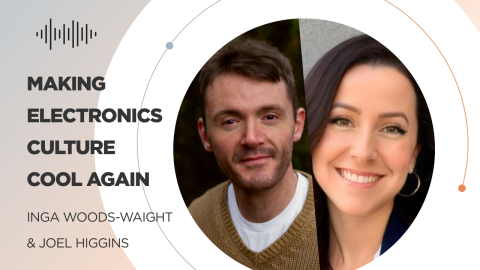

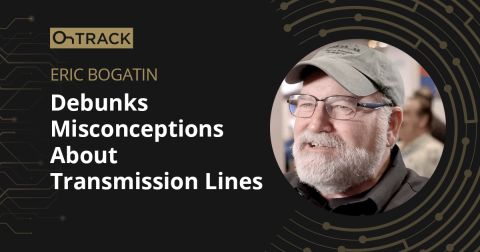

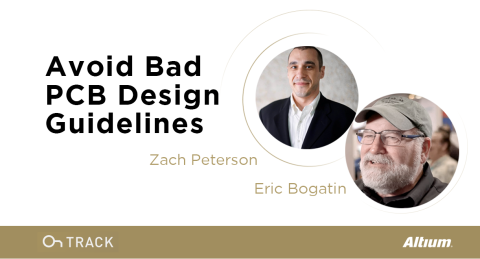

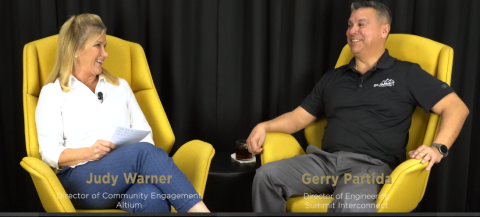

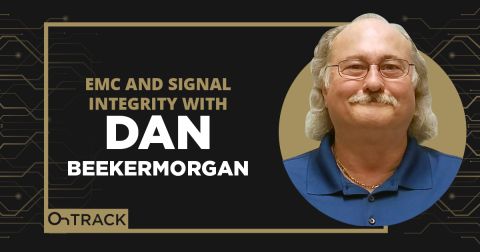


 Back
Back